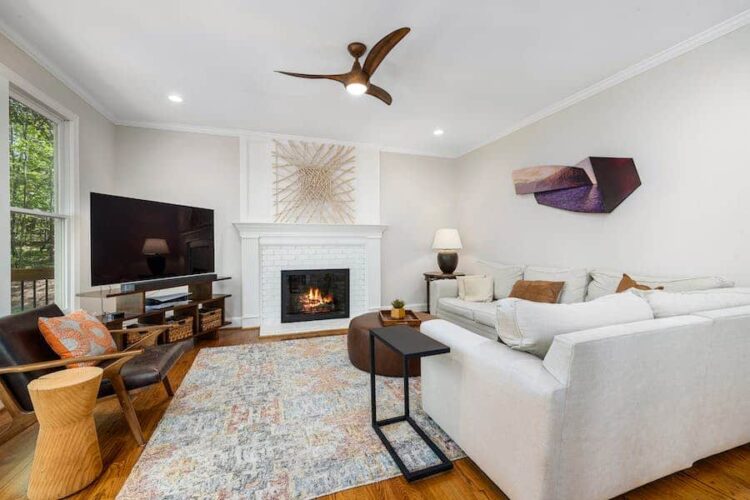While creating spaces that are functional and aesthetically pleasing for everyone is essential, it is equally important to consider the unique needs and preferences of different age groups. Designing for various generations requires a deep understanding of their lifestyles, expectations, and physical capabilities. This article will explore the distinct design considerations for different age groups, from children to seniors, and even touch upon how students can gain insights into generational design through an interior design course.
Designing for Children
Creating spaces for children requires a careful balance between safety, stimulation, and functionality. When designing rooms for kids, it’s essential to consider their ever-evolving needs. Here are some key principles to keep in mind:
Safety First: Children are naturally curious, and their safety should always be the top priority. Rounded edges, non-toxic materials, and secure furniture are vital elements in child-friendly spaces.
Vibrant and Stimulating: Kids thrive in environments that encourage creativity and imagination. Using bright colors, interactive elements, and age-appropriate furniture can foster their growth and development.
Flexible Layouts: Children’s needs and activities evolve quickly, so it’s essential to design spaces with flexibility in mind. Incorporate modular furniture and storage solutions that can be easily rearranged to adapt to changing play and study requirements. This allows the room to grow with the child, saving both time and resources in the long run.
Designing for Teenagers
Teenagers have unique needs, seeking independence and personal expression. Designing spaces for them should reflect these desires while also being functional and adaptable. Here’s how:
Personalization: Allow teenagers to express themselves through their space. Provide options for customizing their room with posters, artwork, and versatile furniture that suits their changing tastes.
Study and Social Areas: Create a balance between study and social spaces. A dedicated study area with proper lighting and organization is crucial, as is a comfortable hangout spot for friends.
Privacy Zones: Recognize the importance of privacy in a teenager’s life. Incorporate elements like sliding doors, curtains, or room dividers to create designated private areas within their rooms. This allows teenagers to have personal space and a sense of independence while still being part of the larger household.
Designing for Young Adults
Young adults are often focused on establishing their careers and social lives. Their living spaces should support their lifestyle, providing both comfort and functionality:
Multi-Functional Furniture: Opt for furniture that serves multiple purposes, such as sofa beds, convertible desks, and storage solutions. This allows young adults to make the most of their limited space.
Technology Integration: With the digital age in full swing, incorporating technology-friendly features, like charging stations and smart home systems, can enhance convenience and connectivity.
Designing for Families
Family-oriented spaces require versatility and durability to accommodate different age groups under one roof:
Open Layouts: Open floor plans foster family togetherness while also allowing for individual activities. A well-designed kitchen, dining, and living area can be both functional and inviting.
Child-Friendly Design: Families with children should have designated play areas with easily washable surfaces, ample storage for toys, and child-proofed design elements.
Designing for Seniors
As people age, their mobility and comfort become more significant concerns. Designing spaces for seniors requires careful attention to their unique needs:
Accessibility: Ensure that all spaces are wheelchair-friendly, with wider doorways and hallways. Non-slip flooring and grab bars in bathrooms can greatly improve safety.
Natural Lighting: Adequate natural light and good visibility are crucial for seniors. Consider larger windows and strategically placed lighting to enhance visibility.
Interior Design Courses for Generational Design:
Students interested in mastering the art of generational design can benefit greatly from an interior design course that focuses on this specialized area. These courses delve into the various design considerations for different age groups, offering insights and hands-on experience in creating spaces that cater to diverse needs.
Through these courses, students can learn about the psychological and physiological aspects of generational design and understand how different age groups perceive and interact with their surroundings. They also gain practical knowledge about selecting appropriate materials, furniture, and color schemes that align with the specific needs of each demographic.
The Bottom Line
In conclusion, designing for different generations is a challenging yet rewarding aspect of interior design. By considering the unique requirements and preferences of each age group, designers can create spaces that are not only aesthetically pleasing but also functional and safe. Whether you’re designing for children, teenagers, young adults, families, or seniors, the key is to tailor the space to meet their specific needs and enhance their quality of life. Moreover, for aspiring interior designers, exploring generational design through specialized courses can provide invaluable skills and expertise in this fascinating field.







